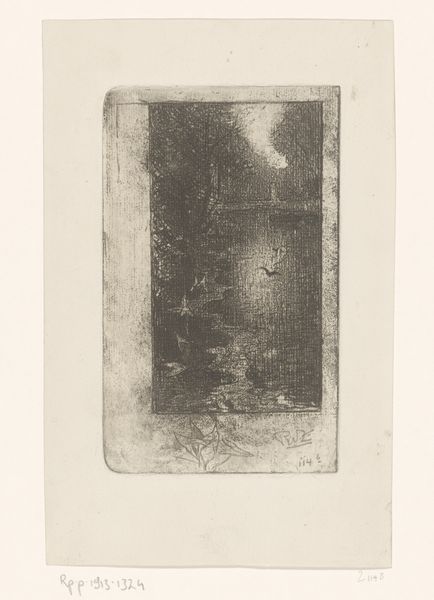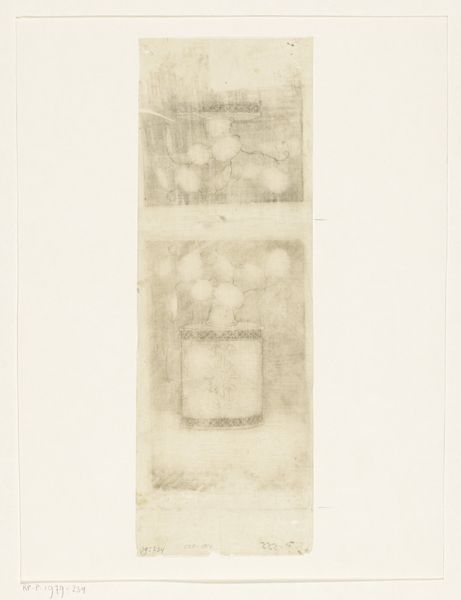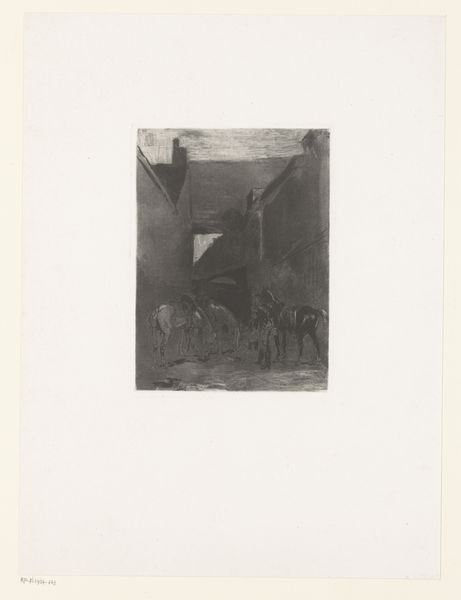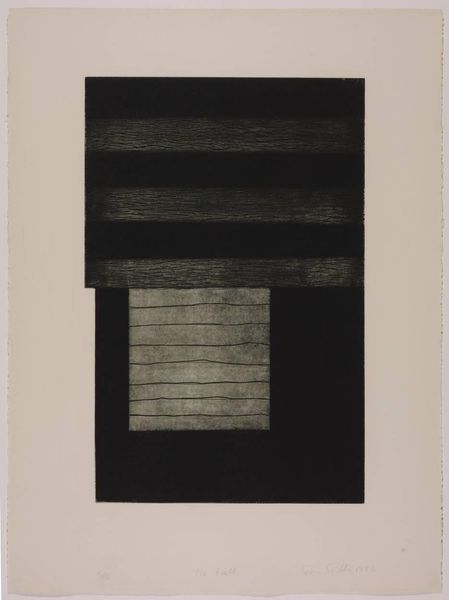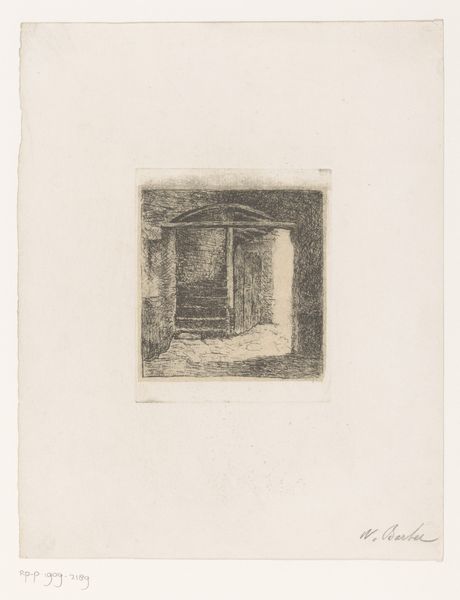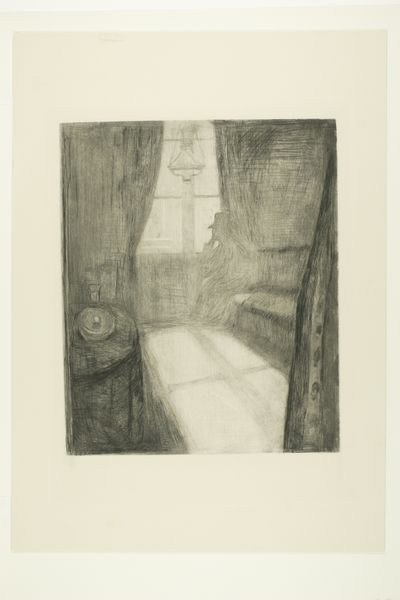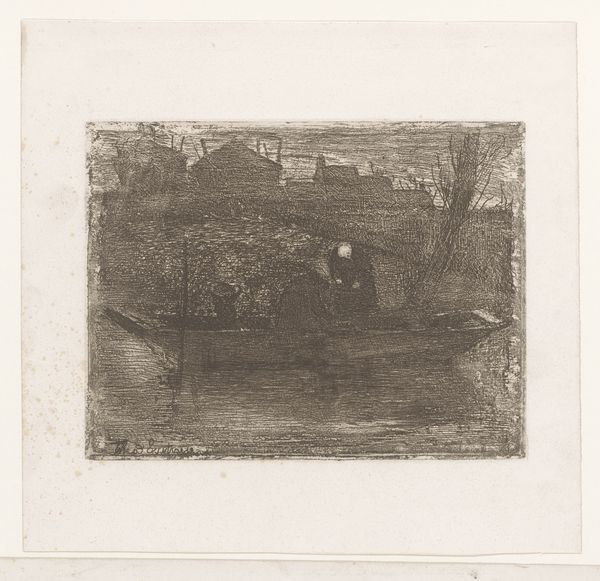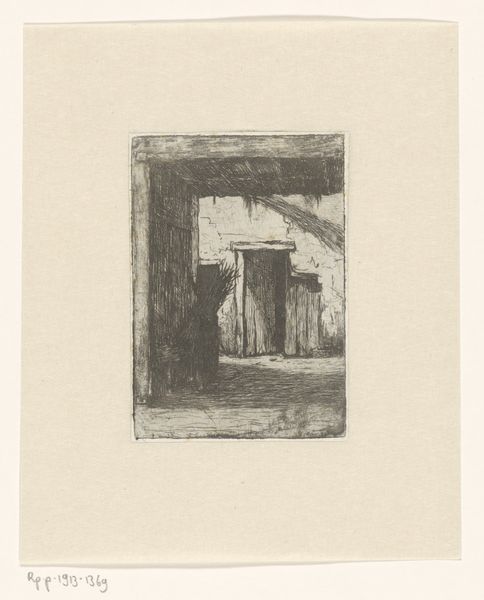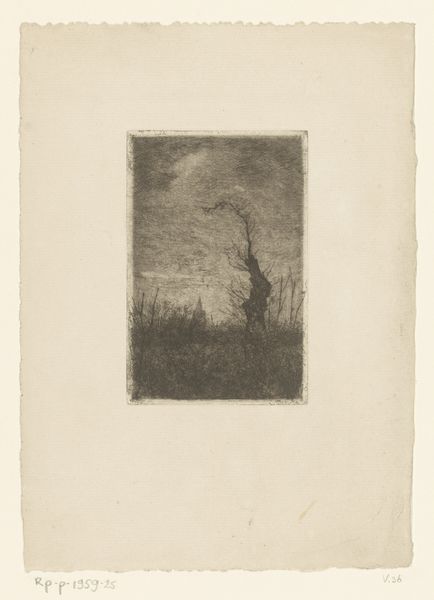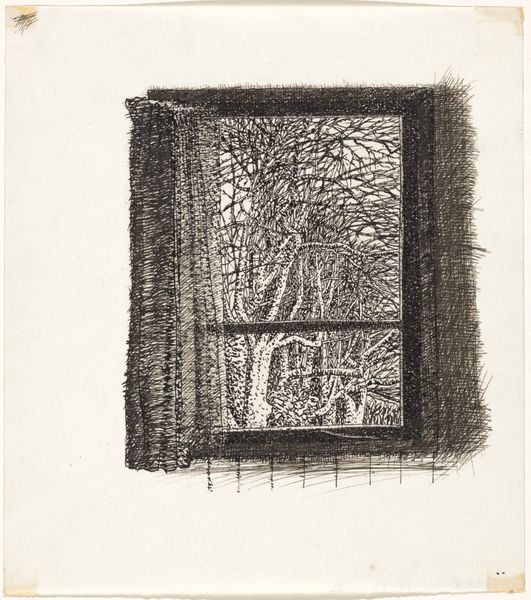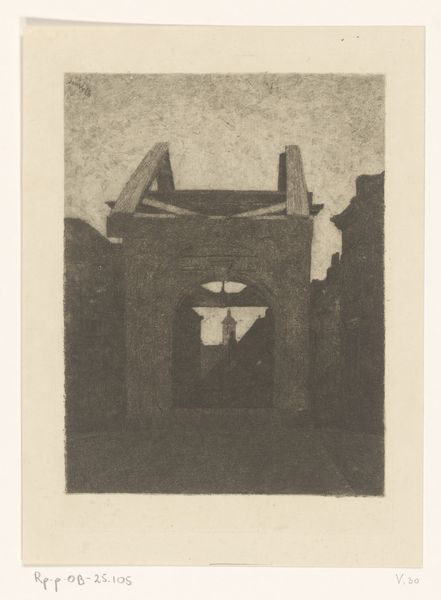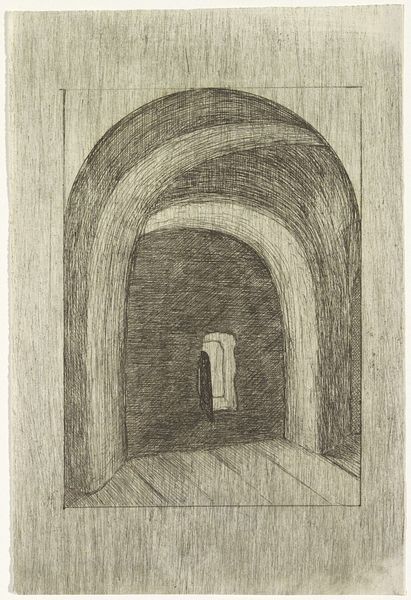
print, etching
# print
#
etching
#
landscape
Dimensions: height 117 mm, width 80 mm
Copyright: Rijks Museum: Open Domain
Jan Veth made this etching of a bridge in Amsterdam sometime before 1925, using a copper plate and acid. The image is built up from tiny, closely-hatched lines incised into the metal. The plate would have been covered in a waxy, acid-resistant ground, and then Veth scratched his composition into that surface with a needle. Immersing the plate in acid then bit away the exposed copper. This process could be repeated to deepen the lines, allowing for a richer print. The final image has a murky, atmospheric quality, as if we’re peering into the past. It is the skilled labor of the hand, cutting and layering the marks, that create the scene's somber mood. Each tiny stroke represents a deliberate action. This kind of printmaking was very popular at the time. It democratized art-making, as compared to unique paintings, allowing for images to circulate widely. In this way, even a seemingly straightforward landscape could carry social meaning. The beauty is not just in the view, but also in the making.
Comments
No comments
Be the first to comment and join the conversation on the ultimate creative platform.
